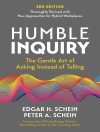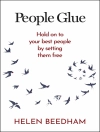The SAGE Handbook of Organizational Wellbeing is a comprehensive and cutting-edge work providing the latest insights into a range of perspectives on organizational wellbeing, as well as highlighting global wellbeing issues and exploring new contexts. Topics covered include: digital working and social media, LGBTQIA+ identifications and work, suicide at work, refugee workers, and mental health. A multi- and inter-disciplinary work, this handbook embraces ideas and empirical work from a range of fields including psychology, business and management, economics, and science. This handbook draws together current knowledge whilst also outlining emerging issues and directions, making this an invaluable resource for students and researchers spanning a wide array of disciplines.
Part 1: Theoretical Perspectives
Part 2: International Issues and Contexts
Part 3: Developing Organizational Wellbeing
Part 4: Emerging Issues and Directions
Содержание
Chapter 1: Organizational Wellbeing: Introduction and Future Directions — Tony Wall, Cary L. Cooper, & Paula Brough
Part 1: Theoretical Perspectives
Chapter 2: Understanding the cost of mental health at work: an integrative framework — Juliet Hassard, Kevin Teoh, Louise Thomson, & Holly Blake
Chapter 3: Personality, wellbeing and wellbeing interventions — Jack Evans, Helen Brewis, & Ivan Robertson
Chapter 4: Wellbeing and age in organisational life — Hannes Zacher
Chapter 5: Emotions and Wellbeing at Work: A Multilevel Perspective — Ashlea C. Troth, Alannah Rafferty, & Peter J. Jordan
Chapter 6: Requesting and Receiving Supervisor Support and the Implications for Organisational Wellbeing — Thomas D. Mc Ilroy, Stacey L. Parker, & Blake M. Mc Kimmie
Chapter 7: Wellbeing and Work-Life Boundaries/Interfaces — James Campbell Quick
Chapter 8: Social Capital and Wellbeing: The Role of Work and Family Relations across Cultures — José Atilano Pena-López, Paolo Rungo, & José Manuel Sánchez-Santos
Chapter 9: Social Movements and Wellbeing in Organizations from Multilevel and Intersectional Perspectives: the case of the #blacklivesmatter movement — Mustafa F. Özbilgin & Cihat Erbil
Chapter 10: Organizational Resilience: Complex, Multisystemic Processes During Periods of Stress — Michael Ungar
Part 2: International Issues and Contexts
Chapter 11: Virtual Work, Technology and Wellbeing — Monideepa Tarafdar & Jean-François Stich
Chapter 12: Intentions Behind the Use of Social Network Sites and its Association with Employees′ Job Performance and Wellbeing — Haziq Mehmood & Oi-ling Siu
Chapter 13: Intrapreneurship and wellbeing in organisations — Elliroma Gardiner & Jonas Debrulle
Chapter 14: Entrepreneurs′ Psychological Wellbeing — Ann-Kathrin Kleine & Antje Schmitt
Chapter 15: Mergers, acquisitions and wellbeing in organisational life: The critical role of Human Resources — Teresa A. Daniel
Chapter 16: Presenteeism, health, and performance — Maria Karanika-Murray, Caroline Biron, Valerie Hervieux, Zara Whysall, & Huijun Chen
Chapter 17: LGBTQI Identities and Organisational Wellbeing — Alys Bethan Einion-Waller
Chapter 18: Preventing suicide in the workplace — Victoria Ross, Sharna L. Mathieu, Katrina Witt, & Kairi Kõlves
Chapter 19: Grief in the Workplace — Stephanie L. Gilbert & E. Kevin Kelloway
Chapter 20: Employee Wellbeing in Post-Disaster Settings — Sanna Malinen, Katharina Näswall, & Tracy Hatton
Chapter 21: Humanizing Work: Occupational Mental Health of Humanitarian Aid Workers — Cheryl Y.S. Foo, Helen Verdeli, & Alvin Kuowei Tay
Part 3: Developing Organizational Wellbeing
Chapter 22: Workplace interventions: individual, team, organisational — Ian Hesketh
Chapter 23: The 3 Pillars of Mental Health in the Workplace: Prevention, Intervention, and Accommodation — Rachael Jones-Chick & E. Kevin Kelloway
Chapter 24: National approaches to wellbeing interventions: The UK Management Standards as an example — Karina Nielsen, Carolyn Axtell, & Siobhan Taylor
Chapter 25: National arts and wellbeing policies and implications for wellbeing in organisational life — Simon Ellis Poole & Alison Clare Scott
Chapter 26: Nudge theory applied to wellbeing at work — Marco Tagliabue
Chapter 27: Applications of neuroscience to improve wellbeing in organizational life — Justin James Kennedy & Lisa Leit
Chapter 28: Psychologically informed coaching interventions and workplace wellbeing — Yi-Ling Lai & Stephen Palmer
Part 4: Emerging Issues and Directions
Chapter 29: Creative-reflective inquiries and wellbeing in organisations — Victoria Field & Anne Taylor
Chapter 30: Measuring Wellbeing in Organisational Contexts — Katharina Näswall, Jennifer Wong & Sanna Malinen
Chapter 31: Evaluating Multicomponent Wellbeing Strategies: Theoretical and Methodological Insights — Jana Patey, Emike Nasamu, Sara Connolly, Kevin Daniels, Rachel Nayani, & David Watson
Chapter 32: Indigenous Peoples′ Perspectives and Wellbeing in Organisational Life — Jarrod Haar & Aksa Ghafoor
Chapter 33: Play and wellbeing at work — Kevin Moore
Chapter 34: Creative practices for wellbeing in organisations: an emerging scholarship of practice framework — Tony Wall & Richard Axtell
Chapter 35: Micro-activism and wellbeing: 1, 000s of snowflakes and the potential avalanches — The Kintsugi Collective
Chapter 36: Workers′ resistance in defense of wellbeing in contemporary organizations — Florence Palpacuer
Chapter 37: Spiritual wellbeing in organisations — Scott Foster, Tony Wall, & Anna Foster
Chapter 38: Posthumanism and wellbeing in the workplace — Raya A. Jones
Chapter 39: Artificial Intelligence, big data, robots and wellbeing in organisational life — Jarrod Haar & David Brougham
Chapter 40: International and National Standards in Health, Safety and Wellbeing — Wilson Wong
Об авторе
Paula Brough is a Professor of Organisational Psychology in the School of Applied Psychology at Griffith University in Brisbane, Australia, and Leader of the Occupational Health Psychology Research Lab. Paula’s primary research and teaching areas are occupational stress and coping, employee mental health and wellbeing, work engagement, work-life balance, workplace conflict (bullying, harassment, toxic leadership), and the psychosocial work environment. Paula assesses how work environments can be improved via job redesign, supportive leadership practices, and enhanced equity to improve employee health, work commitment, and productivity. Paula works with a variety of organisations to reduce their employee’s experiences of stress and burnout, and to improve employee’s wellbeing, mental health and work-life balance. This work includes group and individual training to improve both long-term leadership skills and the follow-on wellbeing and performance of their workers. Paula has authored over 60 industry reports, over 120 journal articles and book chapters, and has produced 9 scholarly books based on her research. Paula is an Associate Editor of Work & Stress, and is Board member of Journal of Organizational Behaviour, International Journal of Stress Management, and the BPS Work-Life Balance Bulletin.












